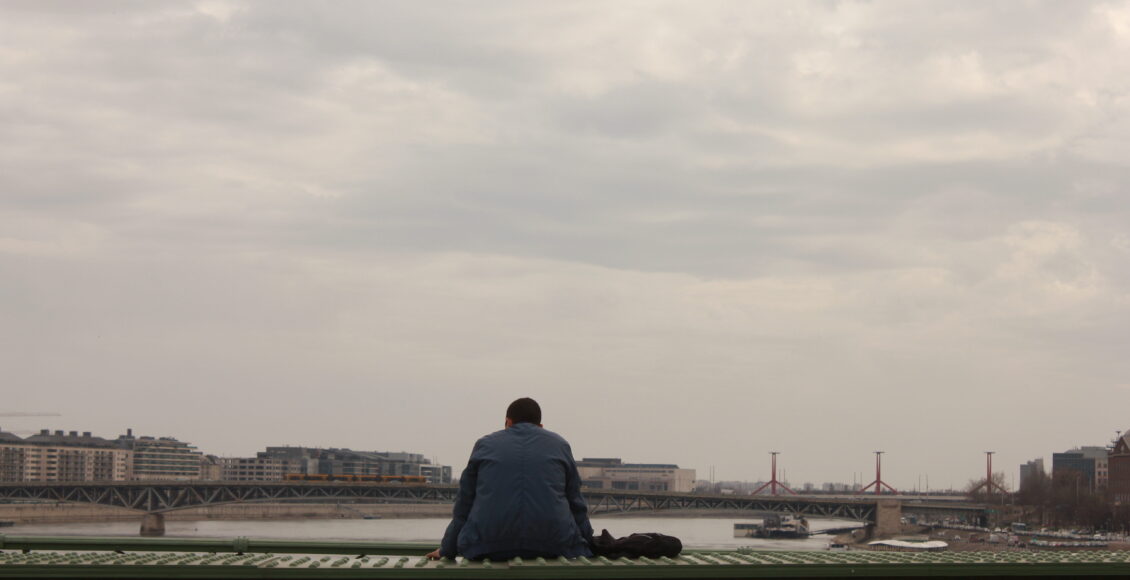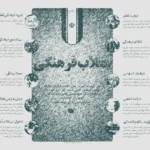Leaving, Staying, Returning: A Narrative Study of Migration Decisions of Educated Iranians, 2011-21 (©Background)
/PhD Dissertation Review | Reading Time: 6 minutes
Leaving, Staying, Returning
A Narrative Study of Migration Decisions of Educated Iranians, 2011-21
Mina Azizi | June, 2025
© Background Photo by Makan Mohammadi
ISSN 2818-9434
Migration studies in Iran have predominantly focused on outmigration and the desires of those seeking to leave, thereby marginalizing other subjectivities, practices, and alternative trajectories. (Salavati et al. 2018; Fazeli, 2024). In my doctoral dissertation, I seek to move beyond this monolithic lens by foregrounding the diversity of subjectivities, choices, and lived experiences, and by highlighting trajectories that are often marginalized—using a narrative-based approach.
This effort is important because the experiences of numerous population groups who are involved with migration in complex ways—those who do not migrate or who reconsider their decision after migrating—are not reflected in mainstream migration studies. The social story of migration in Iran remains incomplete if these perspectives remain untold. To capture these differences, my dissertation focuses on four groups of master’s and doctoral graduates from the University of Tehran, each representing distinct migration choices and experiences: Migrant (and one preparing to migrate), Returnee, Liminal, Voluntary immobile, and Involuntary immobile.
Drawing on the ‘aspiration-capability’ framework (De Haas, 2021; Carling & Schewel, 2018) and the theory of ‘social networks of migration’ (Massey, 1993), I examine how the aspirations and capabilities of my research participants are socially constructed and reflected in their migration narratives. I also draw on Appadurai’s (2004) formulation of aspiration as a culturally constructed, future-oriented disposition rooted in the pursuit of the ‘good life’ as an essential value. Building on his argument that both aspiration and the capacity to aspire are shaped by social and cultural contexts rather than being purely individual traits, I examine how individuals define and value what constitutes a life worth living. Additionally, I use Amartya Sen’s concept of capability to refer not only to the ability to act on a migratory aspiration, but also to the capacity and freedom to choose among various options and achieve different functional combinations in shaping one’s preferred way of life.
This analytical framework, which integrates both agency and structure in explaining migration, reveals the diverse pathways and intersecting factors that shape migratory aspirations—whether to leave, stay, or return—as well as individuals’ varying conceptions of the good life.
While critiquing push-pull theories of migration, I draw on social network theory to examine how networks of family and friends shape individuals’ migratory aspirations and capabilities—both positively and negatively.
My research on migration narratives led me to identify five distinct types: the Desperate, the Hedonist, the Reflexive, the Resistant, and the Companion. These types do not correspond to discrete groups, nor are they confined to specific migratory decisions or statuses. Rather, they transcend empirical categories and reflect distinct ontological positions that, in relation to power structures, embody diverse forms of agency, aspiration, and capability.” In contrast to the mainstream narratives of migration in Iran, which tend to homogenize migratory conditions and decisions or decontextualize them, the findings of this research reveal significant differences among various groups regarding how contextual factors—such as gender, family structure, age, and class position—impact their migratory decisions.
Narratives here are not merely tools for expressing experience; rather, they function as political and structured acts that shape perception, produce meaning, and delineate the horizons of subjectivity. At the core of the narratives across all groups lies the question of ‘exercising power over life’—that is, individuals experience their agency and capacity for action through particular configurations of aspiration, capability, and conditions of possibility or impossibility.
While ‘Reflexive’ individuals tend to focus on influencing their personal and family lives by staying or returning, and ‘Companions’ seek to exert influence—even in small ways—within their local communities or broader society, the ‘Resistant’ are motivated by opportunities to build and exercise social or political power. They see themselves as combative actors and potential political or social activists, whether through everyday practices or participation in active social movements. The ‘Hedonists,’ possessing a distinct set of capabilities, are largely free from the burden of constant calculation in their migration or travel decisions. In contrast, the ‘Desperate’—who represent both a type and an ontological condition—are driven by a deep sense of deprivation, rooted in their inability to exercise power or influence over their personal or social lives in Iran, which ultimately propels them toward migration.
The variety of narratives I present does not align with the hegemonic account that frames the lack of ‘negative freedoms’—as Isaiah Berlin defines them, meaning freedom from interference and external constraints—as the primary driver of migration. Instead, these narratives support the idea that ‘positive freedoms’—referring to capabilities such as decision-making power, opportunities for self-realization, and the ability to make meaningful choices—also play a significant role in shaping migration decisions.
It also suggests that many potential or actual migrants, when confronted with constraints such as high expectations and cultural or identity pressures in host societies, construct narratives that portray migration not as complete liberation, but as a new arena of confrontation—albeit one distinct from that of the homeland.
This is why simple dichotomies such as leaving/staying or successful/unsuccessful migration fail to capture the complexity of migratory decisions and experiences. The conditions that emerge in these narratives are often hybrid, urgent, suspended, or deeply conscious—situations that make migration simultaneously desirable, possible, and impossible.
In this context, the interplay of factors such as economic capital, class position, education, social networks, and gender plays a decisive role in shaping—or undermining—migratory aspirations and capabilities, both of which are socially constructed. In many cases, migration narratives are not driven by freedom of choice, but by necessity, exhaustion, and the erosion of meaningful life horizons. Conversely, the narratives of those who, despite having the capabilities to migrate or remain abroad, choose to stay in Iran or return, often reflect concerns about social aspects of the family life, broader social dynamics, or even political commitments. These accounts express a particular form of agency characteristic of the ‘Resistant,’ ‘Reflexive,’ and ‘Companion’ types.
This research also adopts an intersectional approach to examine how gender intersects with other factors such as class, age, and family roles in shaping both the content and structure of migration narratives. Gender plays a central role in defining diverse migratory aspirations—including leaving, voluntary and involuntary immobility, and returning—as well as individuals’ capacity to act on them. This intersection produces significant differences in the migration experiences of men and women.
My research shows that the liminal state is not merely a transitional phase or a specific migratory category, but rather an ontological condition that has increasingly spread across society in response to the deteriorating economic, political, and social circumstances of recent years. Prolonged existence in such a state leads to the erosion of hope and the fading of visions for a ‘life worth living’ (Amartya Sen, 2009) or the ‘good life.’ This condition is not confined to desperate migrants or the involuntarily immobile; even returnees and those who remain voluntarily experience this pervasive liminality during times of social and political crisis
Another significant finding of this research is the shifting pattern of capabilities. I show that while individual capabilities such as education have become less influential in the process of migrant acceptance, factors like family support, access to material resources, and connections with relatives or acquaintances abroad have taken on a more decisive role
Furthermore, I examine the migration industry, which reproduces migration as a natural and inevitable path for the educated, thereby marginalizing alternative identities and subjectivities associated with staying, returning, or reconsidering migration altogether. The findings of this study warn that the erosion of aspirations and the breakdown of collective imaginaries around the ‘good life,’ coupled with declining capabilities across all four groups, may result in serious social and political consequences
Ultimately, migration must be re-examined as a social, historical, and epistemological phenomenon—one in which the boundaries between ‘being able to’ and ‘wanting to,’ and between ‘action’ and ‘suspension,’ are constantly shifting. Contrary to the dominant perception of migration as either ‘elite flight’ or a ‘response to economic crisis,’ the narratives explored in this dissertation reveal that various migratory decisions and situations in contemporary Iran—including leaving, returning, and diverse forms of staying—have themselves become spaces for imagination, the reconstruction of agency, and the moral evaluation of belonging and possibilities for social engagement.
References
Appadurai, Arjun. 2004. The capacity to aspire: Culture and the terms of recognition. In Culture and public action: A cross-disciplinary dialogue on development policy, eds. M. Walton and V. Rao, 59–84.
Carling, J., & Schewel, K. (2018). Revisiting aspiration and ability in international migration. Journal of Ethnic and Migration Studies, 44(6), 945-963.
De Haas, H. (2021). A theory of migration: the aspirations-capabilities framework. Comparative Migration Studies, 9(1), 1-35.
Fazeli, Mohammad (2024). Iranian Migration: Causes and Motivations. Daghdaghe Iran Channel.
Massey, D. S., Arango, J., Hugo, G., Kouaouci, A., Pellegrino, A., & Taylor, J. E. (1993). Theories of international migration: A review and appraisal. Population and development review, 431-466.
Salavati, Bahram et al. (2018). International Mobility of Students and Graduates (World and Iran). Rah-e Dan Publishing, Tehran.
Sen, Amartya Kumar (2002). Development as Freedom. Translated by Hossein Raghfar. Kavir Publications, Tehran.









Comments are closed.